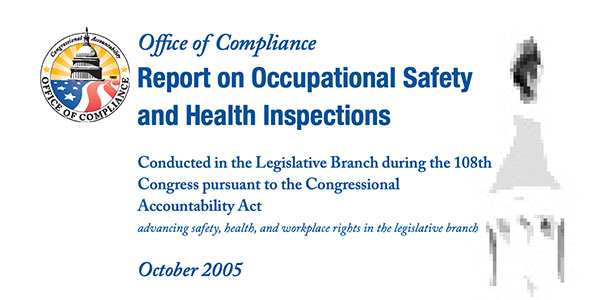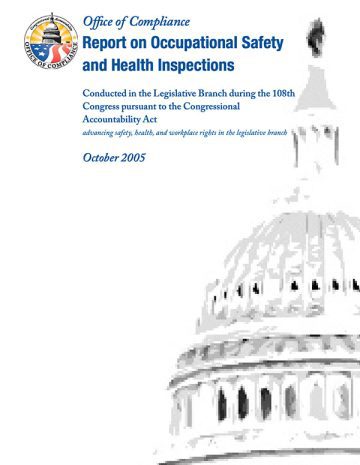Highlights:
- The Congressional Accountability Act (CAA) requires the General Counsel of the Office of Compliance (OOC) to conduct a comprehensive health and safety inspection of all Legislative Branch facilities at least once each Congress. The covered facilities encompass more than 17 million square feet, plus miles of steam, subway, pedestrian and other tunnels. During its 2002 Biennial Inspection, the inspection covered approximately 50% of the space with in these facilities. In March 2004, the new General Counsel initiated a far more detailed and comprehensive “baseline” biennial inspection than in past years in order to complete a full and accurate assessment of each covered facility. As a result, seven times as many violations were identified during the 2004 inspection as compared to the 2002 inspection. However, because of the greater time required to conduct more thorough inspections and limited inspector resources, the Office of the General Counsel (OGC) was able to inspect only 25% of covered Legislative Branch space.
- Finding that the OOC is “facing an increasing workload and scarce resources,” the Government Accountability Office (GAO), in a 2004 Report concerning OOC operations, recommended that the agency “work with the Congress to develop a strategy to ensure that all facilities under OOC’s jurisdiction and located in the Capitol Hill complex and the surrounding Washington, D.C. area … are covered as part of the biennial safety inspections required by the CAA.” Subsequently, Congress approved additional resources to enable the OGC to conduct the biennial inspection of all covered Legislative Branch facilities in the Washington, DC metropolitan area during the 109th Congress.
- During the 108th Congress inspection cycle, the inspection team from the Office of the General Counsel developed and implemented a new Risk Assessment Code (RAC). The RAC system enables the inspection team to ascertain the risks to employee health and safety by classifying the severity and probability of occurrence of the hazards identified and thus bring its risk assessment approach into alignment with general industry practice. This, in turn, helps determine priorities for their abatement. Because the OOC lacked an electronic storage and retrieval system for recording inspection findings and monitoring employing office abatement of identified hazards, Congress recently funded the OOC’s acquisition of a new relational database case tracking system designed specifically for Legislative Branch Occupational Safety and Health (OSH) and Americans with Disabilities Act (ADA) inspections. The OOC is in the process of inputting inspection data from all previous inspections into the new case tracking system.
- While substantial progress has been made in improving health and safety conditions on Capitol Hill since the adoption of the CAA in1995, many of the most significant hazards identified in past Biennial Reports remain uncorrected, particularly those related to fire protection and the evacuation of facilities in the event of emergencies. In addition to specific hazards, the inspection team identified significant program deficiencies. The 108th Biennial Inspection identified 2,666 hazardous conditions of which approximately 1,500 were electrical, 700 were fire and emergency response, 200 were machinery and equipment, 80 were chemical related, 40 were fall-related, and a number were associated with confined spaces. Moreover, many of the violations were ranked as RAC 1 (“imminent risk of death or life-threatening injury”) and RAC 2 (“probable occurrence of severe injury”). Of the hazards identified during the 2004 Biennial Inspection, 45 were identified as RAC 1 and 950 as RAC 2. This number is disproportionately high when compared with inspections conducted in comparable federal facilities by the Government Services Administration.
Learn more and continue to read by downloading the following document(s).

